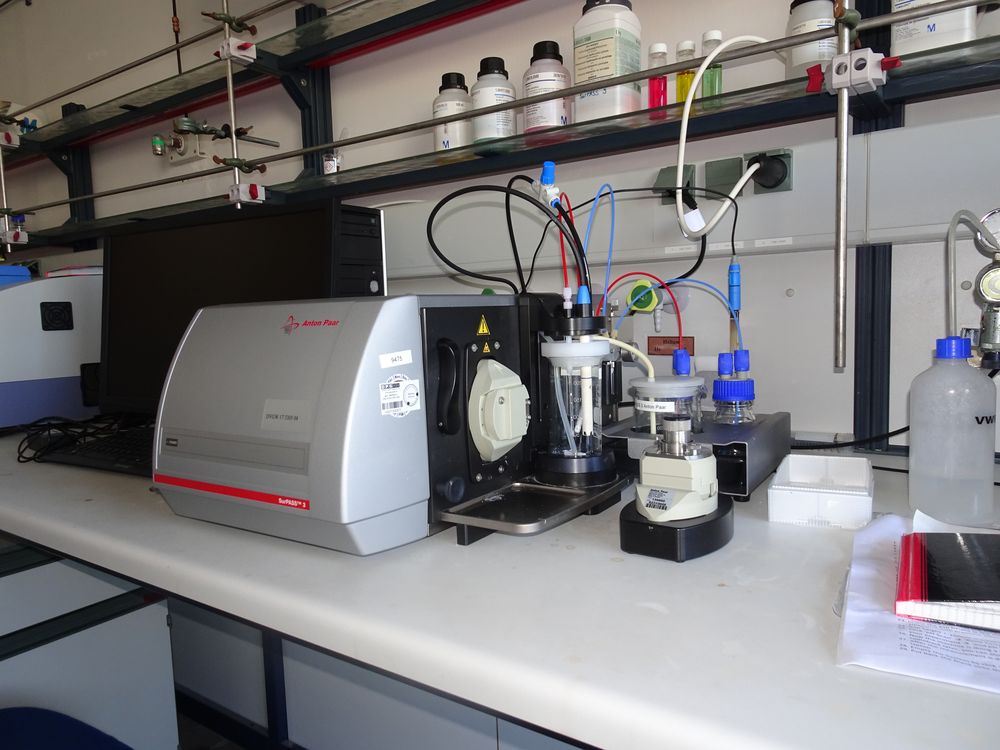The zeta potential describes the charging behavior at solid-liquid interfaces, hence representing a parameter for the surface charge of particles and fixed surfaces.
Particles or surfaces are electrically charged and represent a net charge at their surface. An electrochemical double layer is formed due to the attraction of opposite charged ions and divided into a stationary and a diffusive layer. The movement of the particle causes a shear plane within the diffusive layer, while the stationary layer is fixes to the surface. The zeta potential defines the electrical potential at the shear plane and is a measure for the surface charge.
Measurement capabilities:
- Zeta potential
- Isoelectric point
- Adsorption analysis
The application of two different measuring cells enables the analysis of membranes and granules.


